SOUTH HADLEY, Massachusetts — By now, you may know that the genesis of The Orchards Golf Club began when wealthy industrialist Joseph Skinner wanted to build a golf course across the street from his home for his daughter, Elisabeth Skinner, to play.
Located on the campus of Mount Holyoke College, an all women’s institution, many women have benefited and triumphed here at this layout, adding to the legacy of this historic course that Donald Ross laid out a century ago. Mount Holyoke purchased the club from Joseph Skinner in 1941 for $25,000, and since 2000, it’s been managed and maintained by outside companies.
As the 119th playing of the Mass Women’s Amateur takes place at The Orchards this week, we wanted to share a few things you may not have known about the club and its history. Special thanks goes to William S. Armistead, the great-aunt of Elisabeth Skinner, who published the club’s centennial book within the past year. Some selections in this article are taken from his book, which is available to purchase at the club or on Amazon.
As Armistead writes on the back cover of the book, “The Orchards remains a hidden gem for club members and their guests, in the spirit of a great tradition the essence of golf as it was meant to be played.”
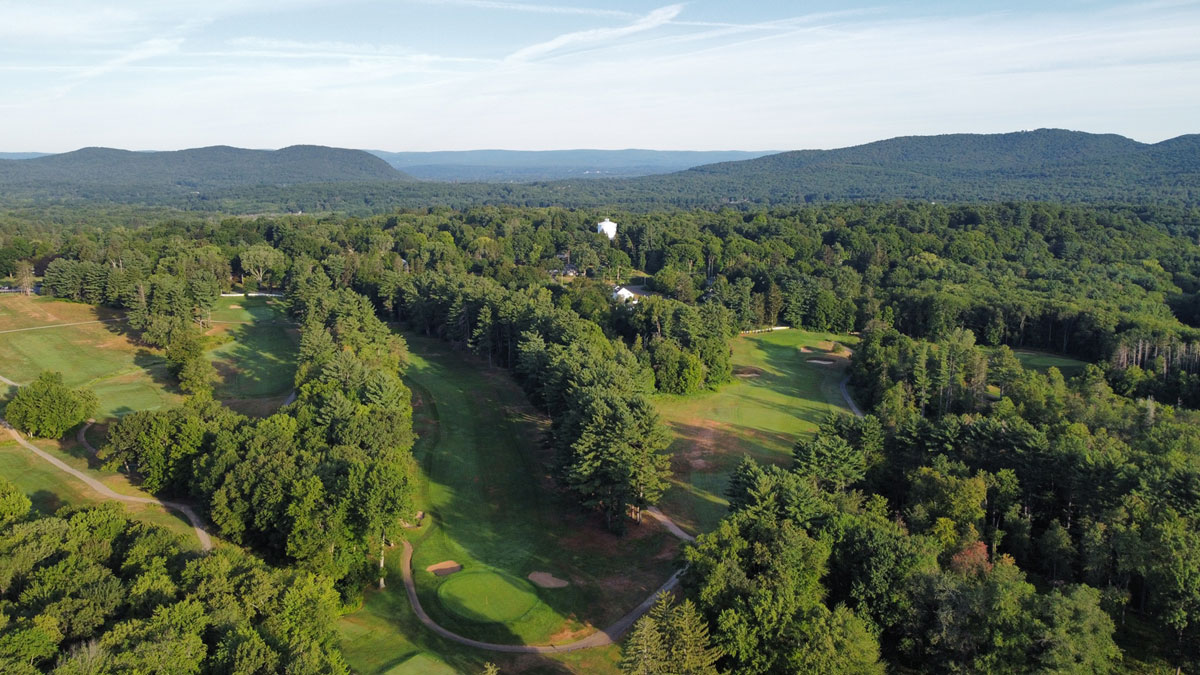
ONLINE: MASS GOLF CHAMPIONSHIP CENTRAL
The club got its name from the apple trees that used to be in the back of the property. Some were also located on the hill that became the first fairway. Even today, you can still find some apple trees beside the 13th green. There used to be a large apple tree on the right of the 4th green. It was on this green that Meg Mallon sank a miraculous 54-foot putt in the final round that helped her capture the 2004 U.S. Women’s Open title. The tree eventually died of old age, but today a cement slab recognizing Elisabeth Skinner sits beneath another tree by the 4th hole.
In recent years, more than 10,000 trees have been removed from the property, most dying red pine trees that were removed to add sunlight and nutrients to the grass surfaces. But one tree in particular was an oddity for the longest time. A cedar tree once stood in front of the fairway bunker on the 14th, blocking it from the green. Once it had grown, members thought it was meant to be there, but in the late 1990s it was finally taken down.
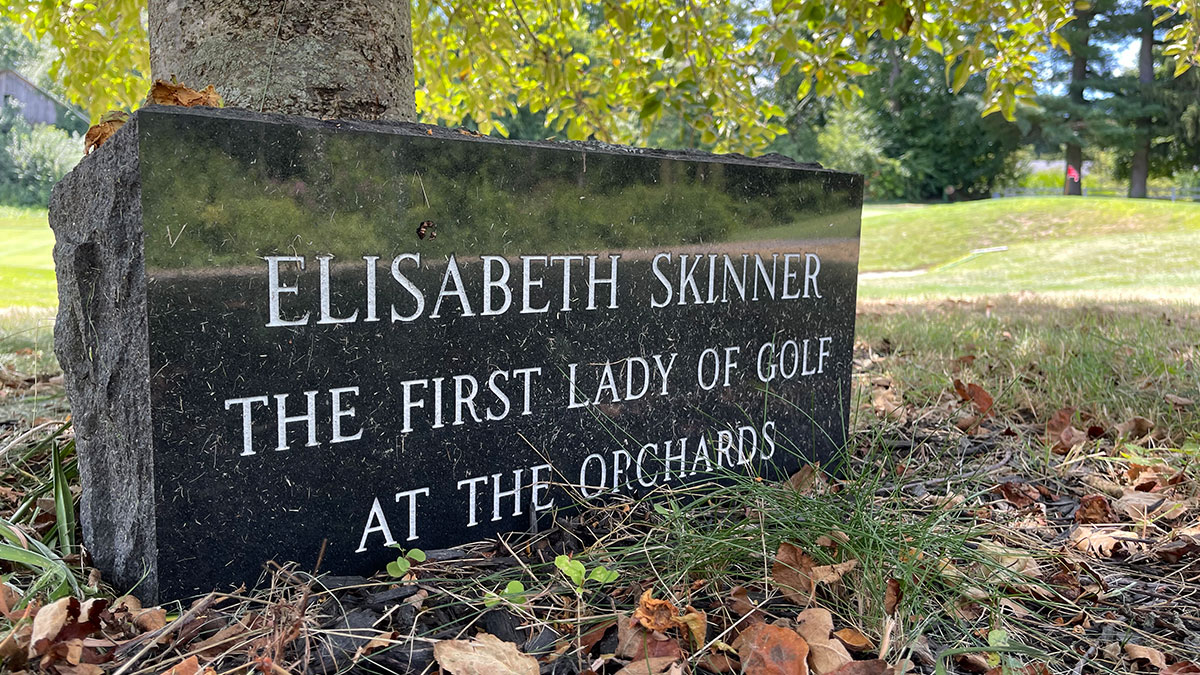
When the golf course opened, Joseph Skinner invited 40 friends to join for the cost of $30 per year (roughly $500 in today’s value). However, the course was open to the public to play for a $1 fee. Because Skinner taught Sunday school, the course was closed Sunday mornings but available for play in the afternoon, but without caddies.
Speaking of caddies, the club’s first golf professional Jimmy Young kept the club’s caddies working hard. At one point he had 50 under his command. In addition to carrying bags, he would have them fish out balls from water hazards, aerate the greens twice a year by strapping small boards with nails protruding from them on their shoes, and tending to greens and bunkers. Their reward was to play nine holes for each green they treated. While caddies have been largely replaced by carts, the majority of those who play here today still opt to walk the course.
The Orchards opened as a 9-hole course in 1922. For those playing 18, the front tees were used in the opening nine while the back tees were used in the second nine. The original nine holes (in order) are present day 1, 2, 3, 9, 10, 11, and most of 16. Hole 8 started on the right side of the present day 18th fairway, while the former 9th (now eliminated) was a par-3 back up the hill toward where the upper parking lot is today. The names of those holes were as follows: Genesis, Bunker Hill, Longfellow, Big Ben, Lookout, Far East, Three Rivers, Old Hickory and Homer.
Jimmy Young was the first head golf professional at Orchards Golf Club. As part of this job, he was required to play golf with the Skinner family, most frequently Elisabeth. In the 1930s, Mount Holyoke College began offering golf instruction. Young taught several classes a day, becoming one of the first PGA professionals to teach women golfers. Skinner and his wife Minnie lived on the course, their old house being a wooden swelling that used to stand by the first tee. Young was elected to the PGA of America in 1927 and won several tournaments around New England, including the Mass Western Open in 1929 and 1936 (At Orchards). In 1935, he tied the course record with a 66, originally set by Australian star Joe Kirkwood.
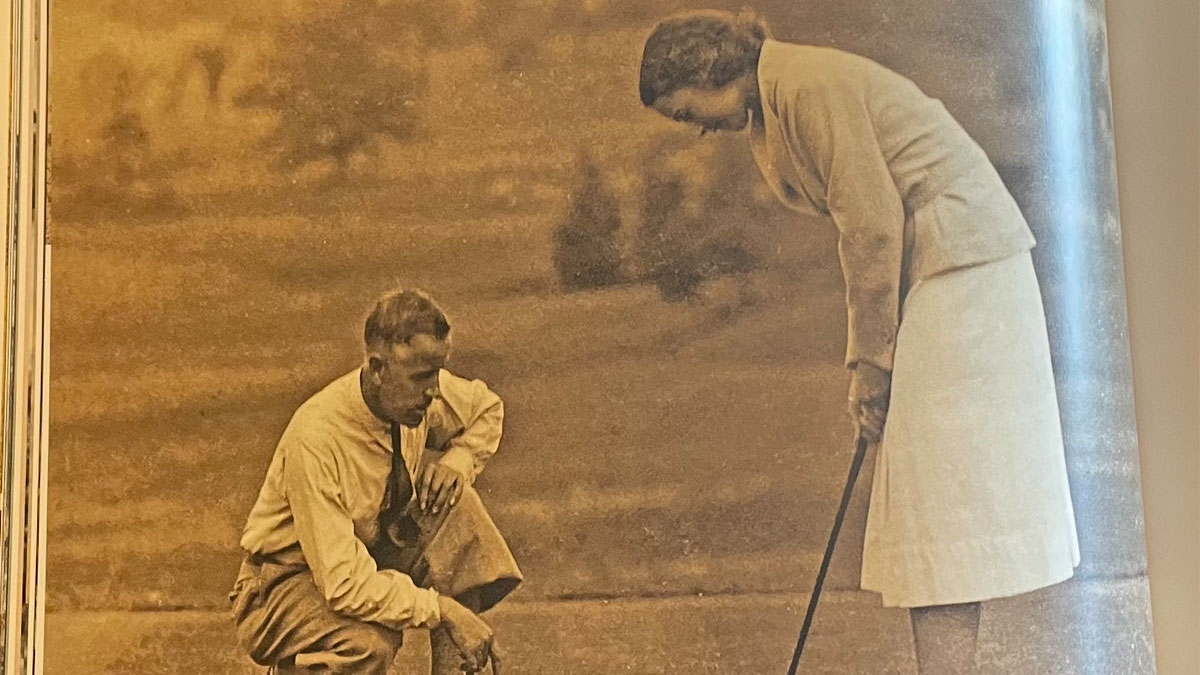
Over its 100 years, The Orchards has largely been focused on keeping a budget that allows for upkeep and maintenance of the property rather than alterations. The Donald Ross layout has remained largely in tact since the full 18 holes became ready for play in 1927. But 50 years after that, there were some changes made. In 1977, the college retained local architect Al Zikorus to do reconstructive work on the greens. The par-5 3rd used to have a green sloped back to front to keep the ball from running off the putting surface. Some members thought it was too easy, so Zikorus raised it and flattened it. On the 8th, Zikorus decided to enlarge the green and also flatten it.
Because these changes made it more difficult for approach shots to hold the green, the college decided to put a pin in Zikorus’ work.
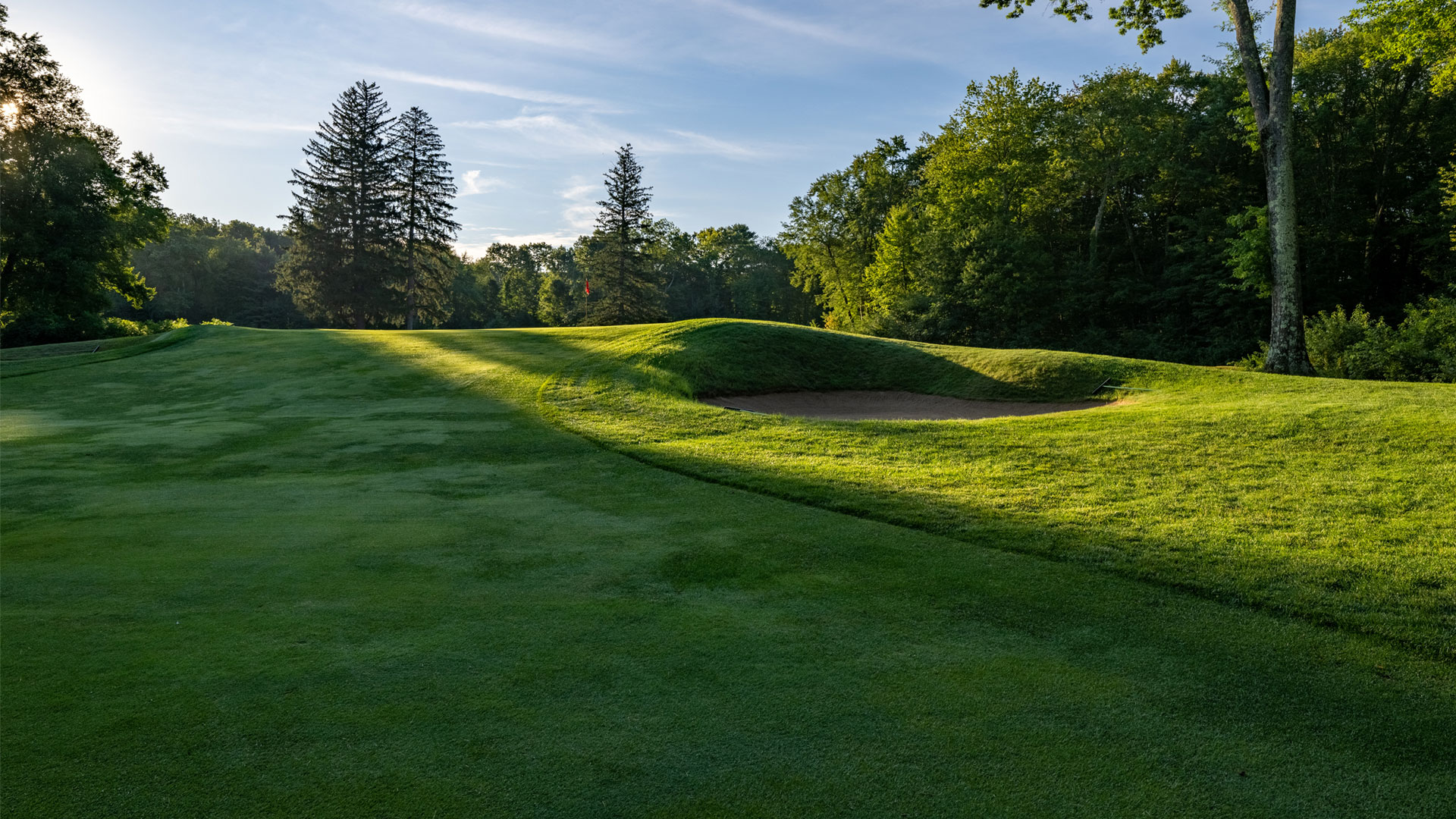
Over its 100 years, The Orchards has hosted several championships for women’s golf, including at the college at USGA level. Among its most recognizable are the 1987 U.S. Girls’ Junior Amateur and the 2004 U.S. Women’s Open.
But before all that, the club hosted the AIWI (Association of Intercollegiate Athletes for Women) national golf tournament in 1973. The AIWI was a precursor to women’s championships being sponsored by the NCAA. More than 100 women, including future champions Hollis Stacey, Nary Bea Porter, and Bonnie Lauer, were in the field. Representing her home state was Westford’s Pat Bradley, who was playing for Florida International University at the time.
Bradley shot a 73 the first day to best Elisabeth’s Skinner’s women’s course record of 74, but that score was almost completely wiped off the books. Because of heavy rains during the spring, many areas of the course were sloppy. Such was the case that the committee added a local rule allowing players the take relief on the 15th fairway. Bradley by mistake took relief on the 13th fairway when she shouldn’t have, and she reported it to the officials. The USGA official on-site didn’t have an answer. After making a call to USGA headquarters in New Jersey, it was eventually determined that Bradley was given a two-stroke penalty, rather than disqualification.
Bradley still came up short of winning as the next day she played the wrong ball on the 12th and proceeded to shoot an 85. Lauer ended up winning the title, but Bradley went on to win six major championships and was inducted into the World Golf Hall of Fame in 1991 and the Massachusetts Golf Hall of Fame in 2002.
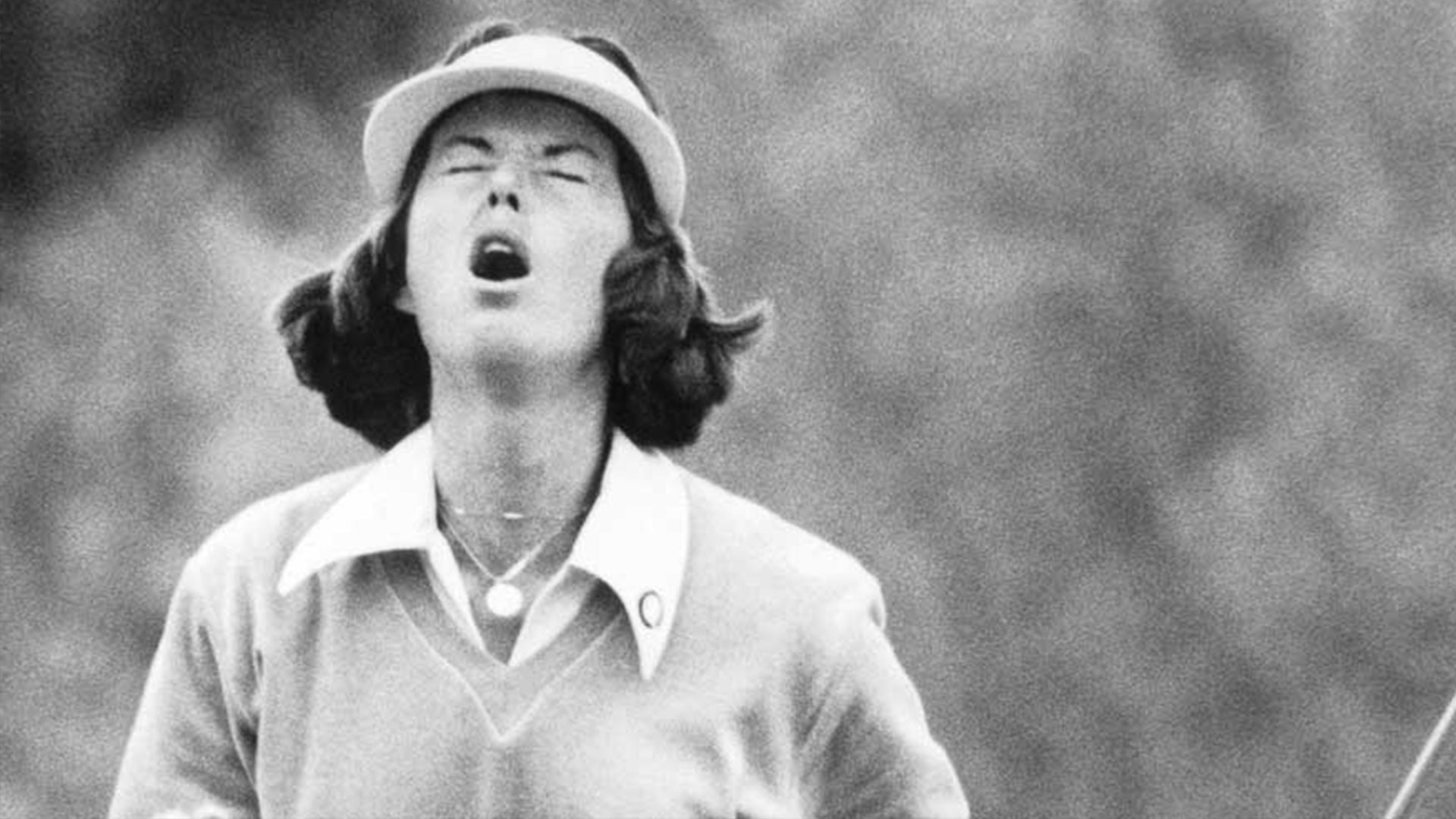
Perhaps no husband and wife team has found more success in golf in this area than Alistair and Bonnie Catto. As Armistead writes, “If the club had a lifetime achievement for Couples Award, Bonnie and Alistair Catto would have won it.” Between them, they won 17 club championships at The Orchards. Alistair, originally from England, picked up golf at age 26 but by age 30 he was competing in the U.S. Amateur at Cherry Hills. Catto won the Mass Four-Ball with Dean Godek twice and the Mass Amateur Public Links championship in 1991.
Wherever he played around the country or around the world, his wife Bonnie would caddie for him. But Bonnie played in many Mass Golf, New England and USGA events. Her best score at The Orchards was a 71, and she once shot a 67 at Longmeadow Country Club. Bonnie’s 10 women’s club titles is only surpassed by Cheryl Krueger’s 18 between 1999 and 2020.
Alistair passed away in 2020, but his memory lives on through members and other golfers who have played with him throughout the years.
Visit MassGolf.org and follow @PlayMassGolf on Facebook, Twitter, and Instagram for the latest information regarding the 119th Massachusetts Women’s Amateur Championship. To join the conversation, use the hashtag #MassGolf and #MassAm.